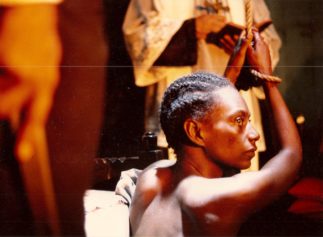With Black people all over the world getting majority of their education from European and American-centered institutions, many may think that our African ancestors were completely submissive on the ship vessels on their way to the Americas during the Trans Atlantic slave trade. That is far from the truth.
The truth is, roughly 15 percent to 20 percent of the ships which left Africa never made it to the “new world.” Thousands of vessels were overtaken by the enslaved Africans on board. During some of these takeovers, these Africans, who were sometimes warriors, rose up and killed every white man on these ships. Some of these ships were sailed back to Africa by the once captured men, thousands of the ships disappeared at sea, and many never made it far from the African shores before being overrun.
Below are 5 great examples of these revolts:
The Creole Ship UprisingOn Oct. 27, 1841, the vessel ship the Creole sailed from Richmond, Va., with 135 enslaved Africans, bound for New Orleans. On board was Madison Washington, who had escaped slavery to Canada in 1840 at age 25, but was later captured and sold when he returned to Virginia in search of his wife Susan.
Unbeknown to Washington, Susan was among the captives on board the Creole. Susan had been considered the faithful servant of her mistress, and traveled to places like White Sulphur Springs and Norfolk on vacations. She was sold because her mistress believed she knew where Washington had escaped to and refused to reveal his whereabouts.
During the trip, at least 14 African men unshackled themselves in the forward hold of the ship. They waited for the right moment to take action, moving to the quarter deck, picking up weapons as they moved along. Officers and crew were quickly overcome in the surprise attack. Washington reportedly “plunged into [the fight] without any care for his own preservation or safety.” By one account, Washington and the men clubbed some of crew members to death and held the rest of the them captive. With loaded muskets, the Africans took command of the Creole with Washington as captain. He demanded that the ship be steered into British territory, which at the time had already abandoned slavery.
On the ship, enslaved women were kept in a different quarters than the men, so it was not until after Susan was set free from her shackles that she saw her husband aboard the Creole. The two reportedly ran to each other, tearfully hugging as they wept while their fellow-survivors cheered.
The Creole later arrived at Nassau, New Providence, where they were all set free by British authorities.

